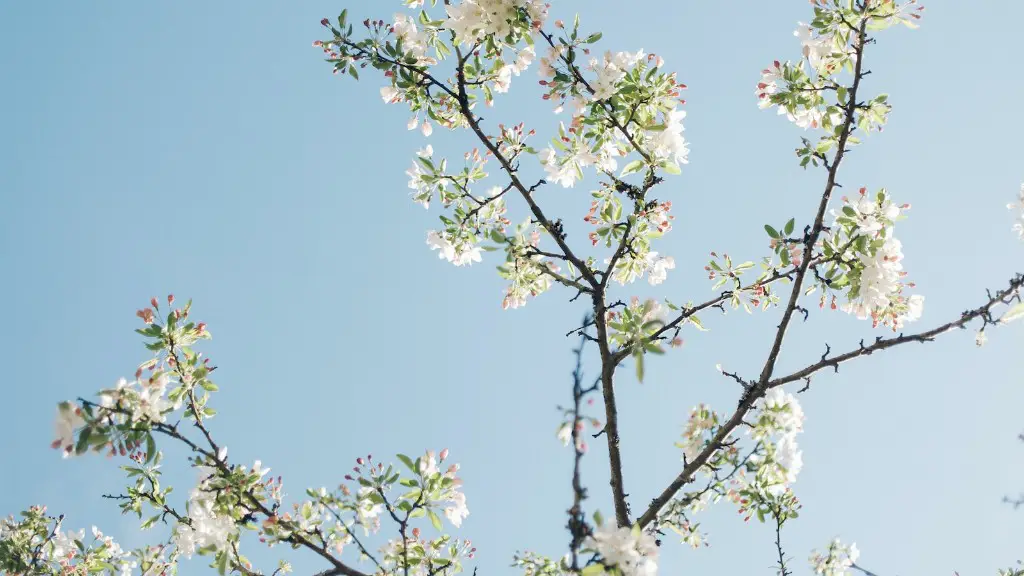Materials Needed
Painting a palm tree on a wall is an easy and inspiring way to instantly liven up any room. Before starting any kind of painting project, it is essential to have the right materials. For painting a palm tree on a wall, you will need the following items:
- Paint brushes in various sizes (1/2 inch, 1 inch, and 2 inch)
- White acrylic paint
- Green acrylic paint
- Tape
- Pencil
- Paper
- Paint tray
Having the right tools is key to a successful painting project. Make sure all of these items are ready before you begin painting.
Plan the Design
The next step is to plan out your design. Before putting paintbrush to wall, it is important to have a clear vision of how you want the palm tree to look. Draw out a basic sketch of your design on a piece of paper. Work out the details and make sure that the measurements are accurate. If you feel like you don’t have perfect art skills, ask a friend to help you out with this step.
Once you have a rough sketch of your design, you can draw it on the wall. Use a pencil and lightly trace the design onto the wall. Then, use tape to mark out the edges and make sure that everything is evenly spaced. With the design marked out, you are ready to start painting!
Paint the Background
Now it’s time to start painting! Start by painting the background of the palm tree. This is usually white and will be the backdrop for the palm tree design. Use a roller to paint the background and make sure it is evenly spread. Cover the entire area with the white paint and let it dry for about two hours.
Once the background is dry, you can start to work on the details of the painting. Make sure to apply multiple layers of the white paint to create a bright and glossy background.
Painting the Tree
Once the background is complete, begin painting the design of the palm tree. Using the pencil outline as a guide, start painting in the details of the tree. You can use long, sweeping strokes to create the fronds of the tree and then quickly fill in the gaps with smaller paint strokes. Use both the 1 inch and 2 inch paintbrush to create different lines and textures. Remember to always work slowly and have patience.
When the painting is complete, let it dry for 24 hours. Then, you can start adding details such as shading, shadows, and highlights.
Adding the Finishing Touches
Once the painting is finished, you can add the finishing touches. This is when you can really express your creativity and personalize the painting. Add details such as a beach scene, palm trees, and other tropical elements.
You can also add texture to the painting. Use sand and other materials to give the painting a more realistic look. If you are feeling daring, you can even add 3D elements.
Protection from the Elements
It is important to protect your painting from the elements. Sun, rain, and wind can damage your painting and make it look faded and dull. To protect your painting, use a clear coat of sealant. This will help to protect your painting and make it last longer.
Hanging and Displaying the Painting
Once your painting is finished and sealed, it is time to hang it up and show it off! Choose a wall that has plenty of sunlight and is free from any kind of moisture. This will help protect your painting and keep it looking its best.
You can hang the painting with nails or hooks. Make sure to use ones that are strong and will not bend or break. Display your painting in a place that you can admire every day.
Saving and Storing the Painting
When you’re not displaying your painting, it is important to make sure that it is properly stored and saved to keep it in good condition. Use a canvas bag to store the painting and make sure it is sealed to prevent dust and dirt from entering. This will keep your painting clean and safe.
Maintenance and Cleaning
It is important to regularly clean and maintain the painting. This will keep it looking beautiful and prevent any kind of damage. Use a soft, damp cloth and a mild detergent to clean the painting every few months. Use gentle strokes to remove any dirt or dust.
Refreshing the Painting
If you want to refresh the painting, you can do so by lightly sanding the surface and repainting it. This will give it a new look and will also help to preserve it for longer.
Conclusion
Painting a palm tree on a wall can be a creative and fun project. With the right materials and careful planning, you can create a beautiful painting that will instantly liven up any room. Have fun and get creative with this project, and before you know it, you will have a stunning piece of art that you can enjoy for years to come.



